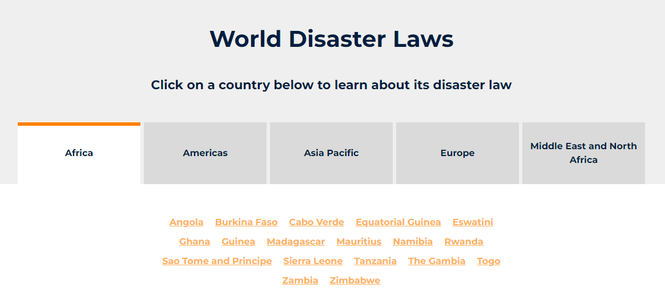
World Disaster Laws showcases the disaster laws of more than 100 countries around the world. For each country featured, a dedicated page provides an overview of the content of the country's main disaster law.
World Disaster Laws also has a search function which allows you to search the content of the featured countries' disaster laws by key indicator. The search can be narrowed by geographical area, permitting the identification of global, regional and sub-regional trends.
Rachel Macleod, IFRC Senior Disaster Law Officer says that with increasing disasters due to climate change and public health emergencies like the COVID-19 pandemic, disaster law is a growing and rapidly evolving area of law.
“Law, regulations and contingency plans are the foundation of how we prevent, prepare, respond and recover from disasters and emergencies. These documents need to be readily accessible by governments, the humanitarian sector and academics.
“The search function of World Disaster Laws allows us to identify trends and gaps in disaster law. For example, using the World Disaster Laws search, we can see that disaster recovery is a topic that is often neglected in domestic disaster laws, with only 16 per cent of featured countries having the main disaster law that addresses disaster recovery in detail, compared to 75 per cent for disaster response.”
Each of the laws featured in World Disaster Laws is available in the IFRC Disaster Law Database, which contains a wide variety of other disaster law documents including case law, documents of international organisations, documents of transnational private actors, treaties, documents of treaty bodies, and Red Cross and Red Crescent documents.
World Disaster Laws was developed with the generous pro bono support of the law firm White & Case LLP. IFRC Disaster Law sincerely thanks each of the lawyers from White & Case who contributed to World Disaster Laws.